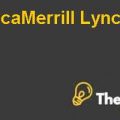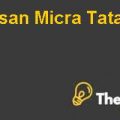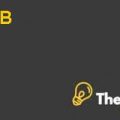SUMMARY
The case illustrates the success story of Coca-Cola in the US, UK and Asian-pacific. The company TCCL operatesin four major categoriesnamely, carbonated soft drinks, nonalcoholicready drink drinks, fruit juices and mineral water. Recently the company faced great influence of WTO organizationmovement on the frame of its sales margin which decreed due to risingawareness of sugar intake as a reason for obesity leading to heartattack.Under such circumstances, the movementof certain countries also posed tariffs and restriction on supply of Sugary product.
In order to retain and adapt to the change in the consumer behavior, the company TCCL, launched its green coke which is madeup from natural sugar and low calories, thus meets the changing demand of the consumers.The intuitive of launching new lookunder thegreenlogo, posted great threat from loss of brand image andambiguity of the brand identity. Also, it exposed thecompany to dilute its signature brand image in the market and exposed the whole marketing plan of old coke to thethreat of losing the association which peoplehave with red and black coke.
However in order to deal with the issues, it is recommended that the company should initiate its offering into US market first with simultaneous involvement in CSR activities that supports health issues like obesity. Moreover, the approach of nutrition testimonial is also referred to make the impact of new Coke-lifestrong in the mind of the consumer.
Coca-Cola Green Harvard Case Solution & Analysis
Background
The Coca-colaCompany (TCCL), has been an eminent player in the market under non-alcoholic beverages.Its main business concentration has been acoca-cola classic, which is for the customers who prefer taste over health, while it has launched several other productsunder the same productline as Coke Diet for people who prefers taste and health both.
Over the period, TCCL has been a dominant player in the markets of US, Australia, UK and Argentina, with its main concentration of business through retail stores, followed by restaurantand local shops. It strong distribution strategy has made it come so far that it acquires 60% of the market share in theNon-alcoholic beverage industry.TCCL has emerged over the period, identifying the consumer behavior and the shift in choices.it has launched coke diet which has low calories compared to coca cola classic yet intakes the same traditional trademark taste of Coca-Cola.
TCCL, has kept its taste uniform and constant among its different offerings, because of the emotional association and perception consumer have regarding Coca-cola.it operates its business by thedivision of the Brand portfolio into four categories.The categories are Carbonated soft drinks (CSD), Non-alcoholic ready-to-drink soft drinks (NASDs), Bottled water and fruit juices. Each of the category carries 35%, 25% and 15% of the market share respectively.
The primary competitor of TCCL isPepsiCo, followed by modeledInternational, Kraft and others, which compete with TCCL in offering similar products.
Since with time, the trends and political circumstances have changed, sugar consumption has posted agreat threat to the lives of the customers in which carbonated drinks faced the greatmusic. Under such circumstances, WTO along with other countries initiatedtariff under government intervention act to regulate or restrict the supply of sugary items in the country....................
This is just a sample partical work. Please place the order on the website to get your own originally done case solution.











